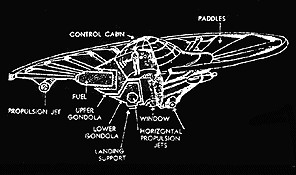Limone sul Garda, the lovely town on the Western banks of Lake Garda (province of Brescia) with less than one thousand inhabitants, recently took the international spotlight for the "longevity protein" found in the blood of several of its citizens. Limone, which is nestled in between the mountains and the lake, has always been an isolated frontier. Precisely this isolation, combined with a series of fortunate and fortuitous episodes, determined the birth of the famous "elixir" in the blood of the locals.
The story of the discovery of Apolypoprotein A-1 Milan began in 1979 when a railway employee, who was born in Limone but had lived in Milan for over 20 years, was hospitalized for a routine check-up. The test results amazed the doctors: although the patient had very high cholesterol and triglyceride levels, he showed no major clinical symptoms and no damage to arteries and heart. Doctors thought this was very strange: incredible, in fact. They decided to do more tests and discovered that the patient, his father, and daughter all had the same anomalous protein in their blood, which they called "Apolypoprotein A-1 Milan" (named after the city in which it was discovered).
The protein in the blood of these people from Limone behaves in an anomalous but beneficial way: it quickly removes fats from the arteries and takes them to the liver, where they are eliminated, which protects against arteriosclerosis and heart attack.
Researchers stepped up their studies to find out why this genetic mutation only occurred in Limone, and learn the importance of hereditary and environmental factors. All the inhabitants of the town underwent blood tests, and the results were quite surprising: many residents carried the gene. Researchers recreated the genealogical tree of the carriers. Thanks to the town and church records, they discovered that all carriers of this gene descended from a couple (Cristoforo Pomaroli and Rosa Giovanelli) that married in 1644, the date when the gene might have first appeared. The gene probably spread due to many marriages between blood relatives, which frequently occurred in Limone until 1932, when the Gardesana Road was inaugurated. The road, with its long tunnels dug out of the mountainside (a genuine marvel of engineering for the time), thus ended Limone?s centuries of isolation and paved the way for tourism from all parts of the world.
Thanks to the valuable cooperation of the citizens of Limone, who willingly submitted to the many necessary blood tests, the A1 Milan protein was synthesized by transferring to several bacteria the ability to reproduce the protein. The first tests on animals took place in the nineties: the animals injected with the cloned protein showed very positive results, with a substantial reduction of cholesterol plaques on artery walls. In November 2003, news arrived from the U.S., where a group of researchers, led by Steven Nissen, reproduced the protein in an experimental drug that was administered to 47 patients suffering from heart disease. The results after a six-week treatment were amazing: there was an average 4.2% reduction of the plaque. This may well be the most important medical discovery of the decade, and the people in Limone are proud to say that the road to longevity started in their small town on the banks of Lake Garda.
The laboratory synthesis of the protein that led to the production of a revolutionary drug able to cure serious heart disease (the first cause of death in the world) put Limone under the spotlight of the international media, and scores of reporters and TV crews were often seen filming their documentaries in the narrow lanes of the town.
World attention increased last May when Limone hosted an important international scientific conference featuring major American and European experts responsible for developments in the cure of heart disease using Apolipoprotein A1.
The meeting was an opportunity not only to discuss medical issues, but also to speak about the unusual longevity of the inhabitants of Limon, where a high percentage is over 80 years of age.
However, the protein is not the only gift that Nature has bestowed upon the lucky inhabitants of Limone. Thanks to their healthy Mediterranean diet (rich in lake fish and local olive oil and citrus fruits) and the favorable and unique climate (Limone is actually the northernmost place where citrus fruits can be grown), the people here have a very long life expectancy.
Unlike the past, today the locals can share these gifts with the many tourists, mainly from Germany, who spend their holidays in this quiet resort town of Lake Garda, perhaps never realizing how good it is for their health.
In 2004, Doctor Sirtori's medical team returned to Limone, and researchers took blood tests of the children recently born to carriers of the gene. They discovered that the number of carriers of the precious A1 Milan protein had increased: eighth children joined the lucky group of 40 carriers. Therefore, the history of the "elixir of long life", which fortuitously began centuries ago due to the geographic isolation of the village, continues, passing from one generation to another.
I LOOK FOR THE FLYING SAUCERS

At the Fiat experimental facility at lake La Garda, a facility that fittingly bore the name of air marshall Hermann Goering, the Italians were experimenting with numerous advanced weapons, rockets and airplanes, created in Germany
So-called U-Plants were to be set up underground as gigantic workshops and launching pads for the secret weapons which were to turn the tide of the war in favour of the Nazis.
Among these were some 74 tunnels along Lake Garda, in Northern Italy, which were to be adapted and transformed into a vast assembly plant by FIAT of Turin in close collaboration with the department of Minister Albert Speer. Seven other tunnels along Lake Garda, near Limone, were to produce several weapons tested at the Hermann Goering Institute of Riva del Garda.